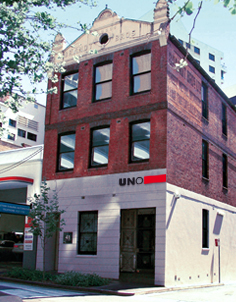Small can succeed in retail against big budget incumbents
Growing up in sixties suburban Sydney the most exotic cuisine my family was familiar with was cabanossi on Jatz crackers. Father felt like a Tooheys or two and good on my mum, she knew Tip Top was the one. Fortunately, forty years of immigrant mothers from around the globe have helped expand Australians’ culinary horizons.
Family businesses show how to be a challenger brand
At the Food and Wine Expo held by Family Business Australia in Sydney in November, the influence of Nonnas was evident as third generation business owners showcased their gourmet products. Their time has come, statistics show the trend to gourmetisation of the Australian shopping basket has now reached beyond the specialist deli and ethnic store to the Supermarket.
Unlike most trade shows, what struck me at the FBA event was the friendly atmosphere, no hard sell, just an infectious enthusiasm for the products these families have been creating for years and a desire to share business stories. From the small catering company making their first tentative step into retail, through to a food service business that gave up on retail in the 70s, one story is common: the bigger challenge isn’t getting onto the shelves of Coles and Woolworths, it’s how to stay there and make a profit.
Two family businesses, Taylors Wines and Coopers Brewery, are testament to the magic ingredient for success in the retail market – the power of building a brand. Branding is what puts the power in your hands, not the channel’s. Building a brand takes more than one-off promotions, or advertising that simply says you are in store now, or paying for inclusion in catalogues with discount offers. To build a brand you need to invest in marketing over time to establish the brand story and your values.
Brand marketing delivers these benefits over a me-to sales approach:
Product
Easy to copy
A commodity
No special distinguishing features
What a factory produces
Shorter life cycle
Addresses functional needs
No identity
Products compete on price
Brand
Hard to copy
What consumers buy
Emotional fit with consumers
Level of confidence and trust
Longer life cycle
Addresses emotional needs
Have personalities
Brand can demand a premium
Fosters Group has destroyed shareholder value to the tune of hundreds of millions of dollars over the last decade by mismanaging the marketing of some icon wine brands, from Lindemans and Penfolds to Seppelt and Tollana. Meanwhile, family business Taylors Wines has stayed true to its five decade history with consistent product, packaging and promotion.
Nick Levy, the marketing manager at Taylors, wouldn’t dream of throwing out the heritage of this family business, whereas corporations time and again allow each new brand manager to make their mark by changing the label their customers know and love to chase a fleeting fashion. Often the new look comes at the expense of long won recognition. Similarly, downgrading a product’s quality to maintain margin or constantly price-cutting to gain share ultimately destroys brands.
Yes, we live in a time where the pace of change is so much faster, yet taking the time to establish what you stand for, developing a dialogue with your customers and creating a sense of authenticity are increasingly valuable tools in a world where global producers can pitch to your retailer with a cheaper knock off product as soon as you leave the buyer’s office.
If you value what you have to sell, it pays to remind your customers as often as you can of why they should love you. Now you can afford to. New technologies, data intelligence and eCommunications now enable challenger brands to compete successfully with the large advertising budgets of corporations.
So find the true benefit of your offer and actively market it. As Revlon said, having built an empire with brand marketing, “we don’t sell cosmetics, we sell hope.” Worked on my mum.
This article first appeared in Business Insight



Scan the QR code for our contact details.
Download the Neoreader app.
© COPYRIGHT 2013 UNO marcomms Privacy